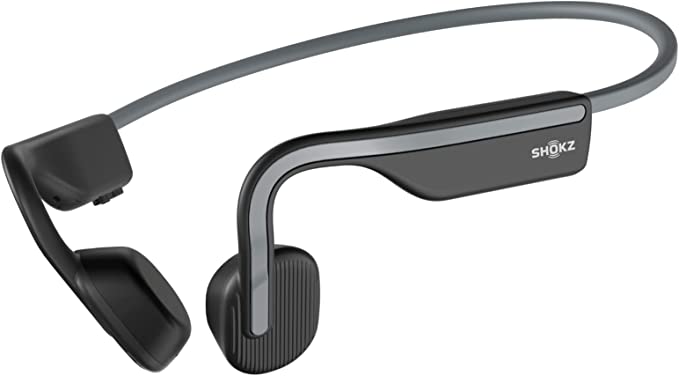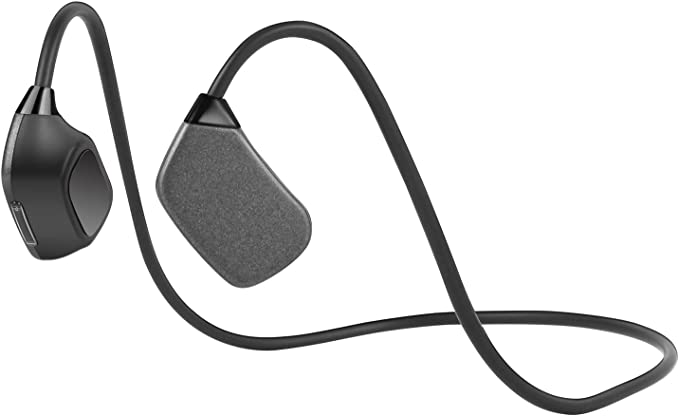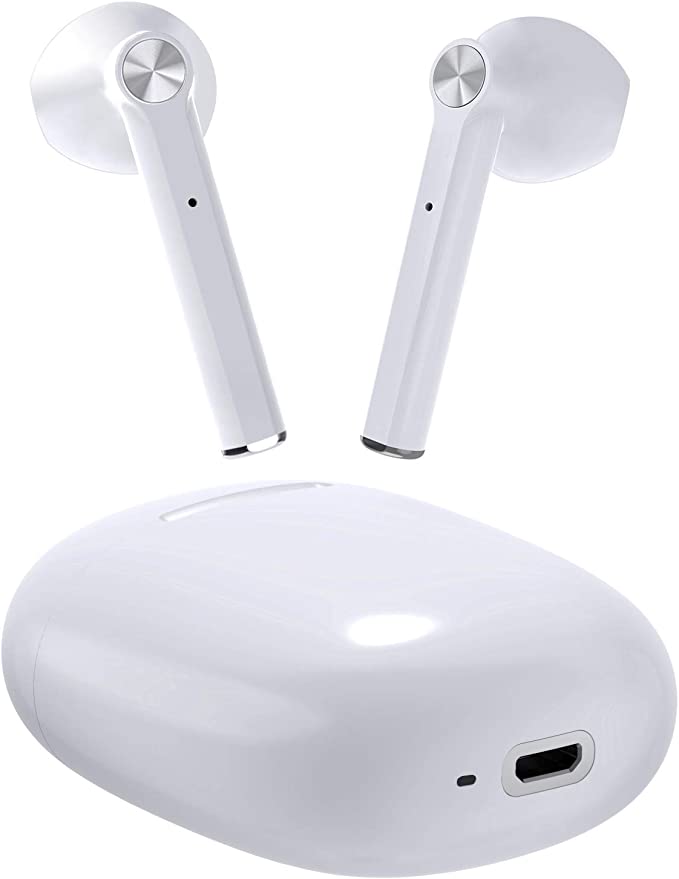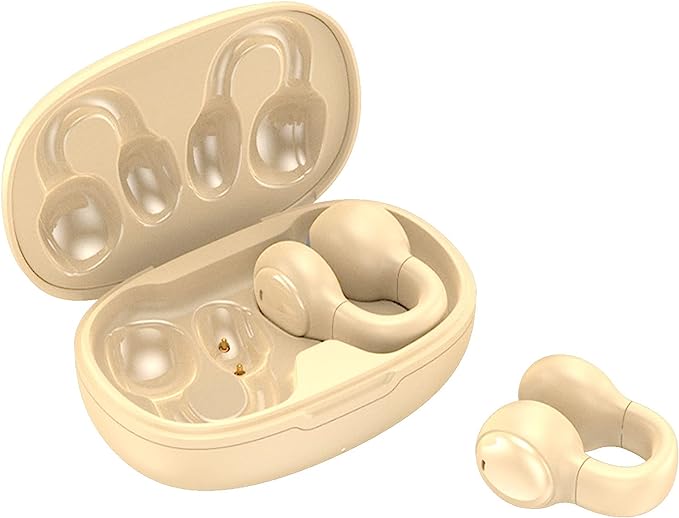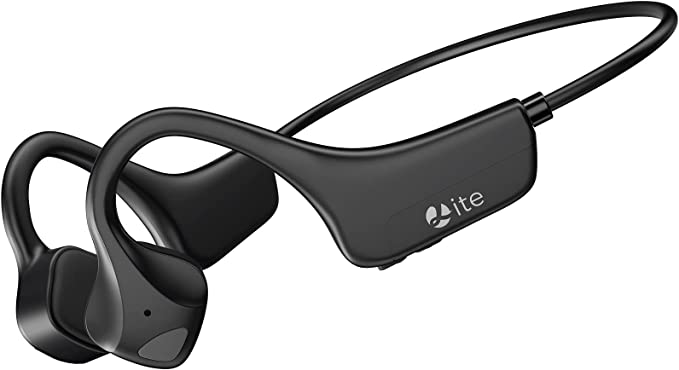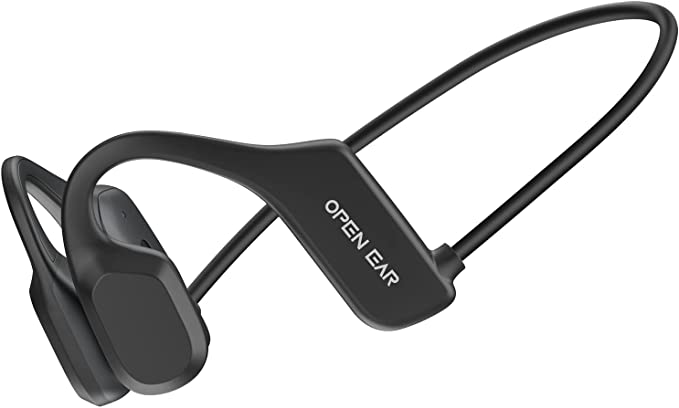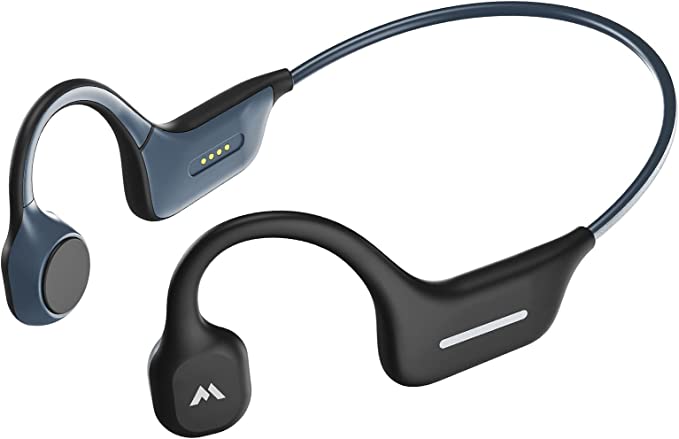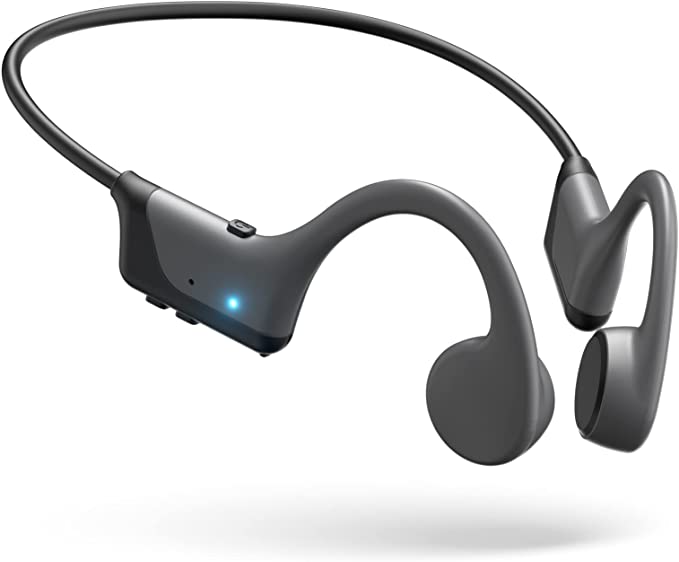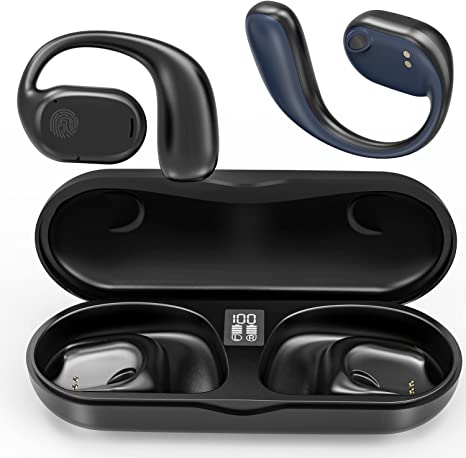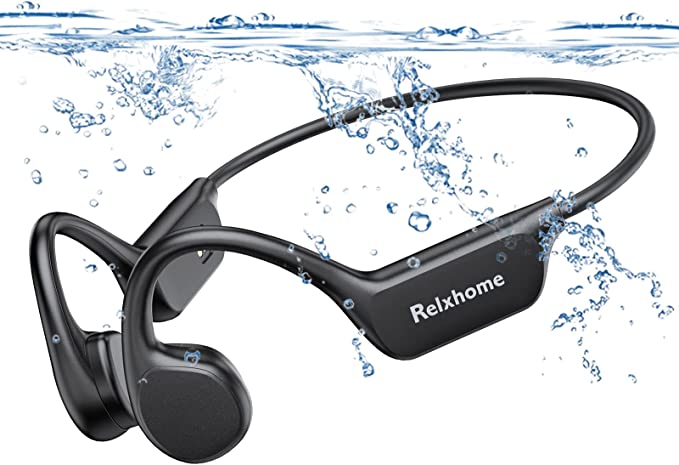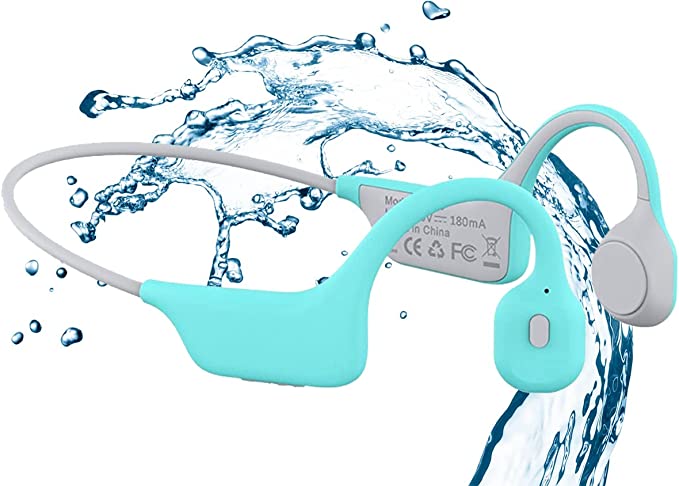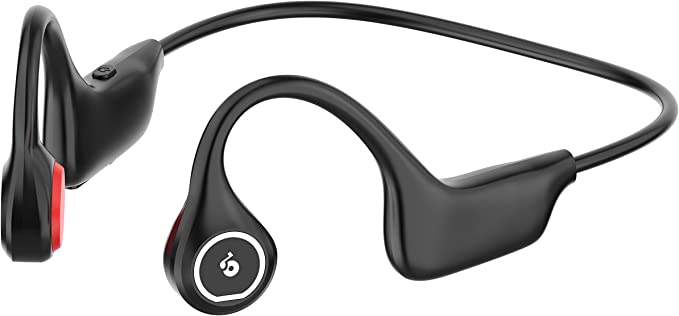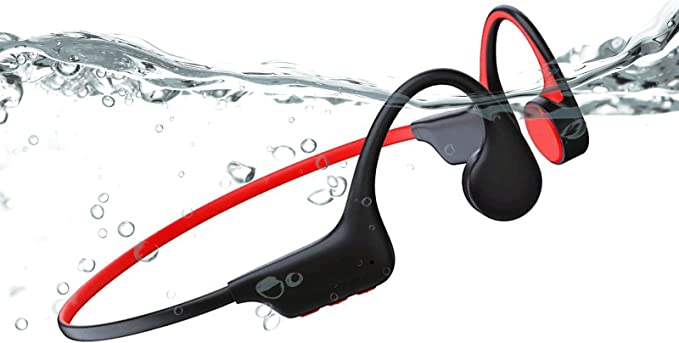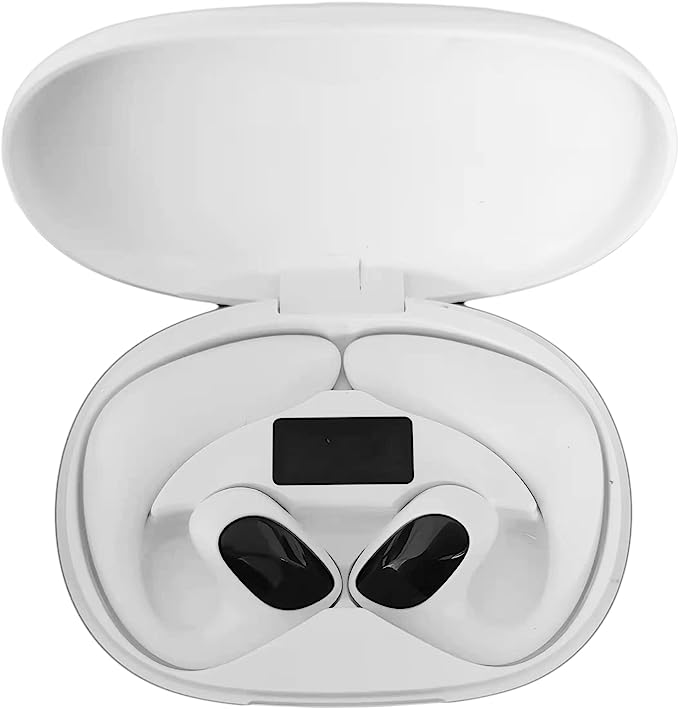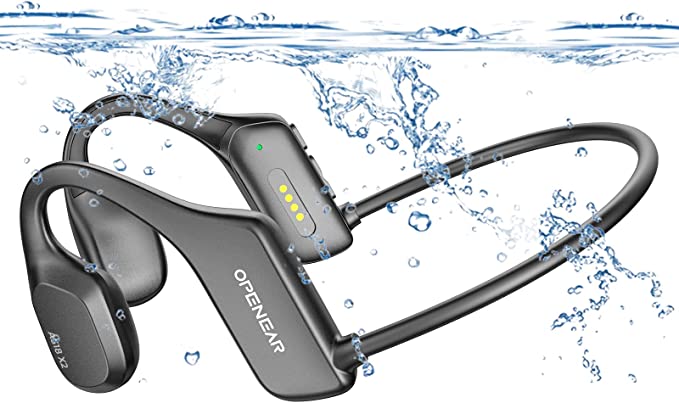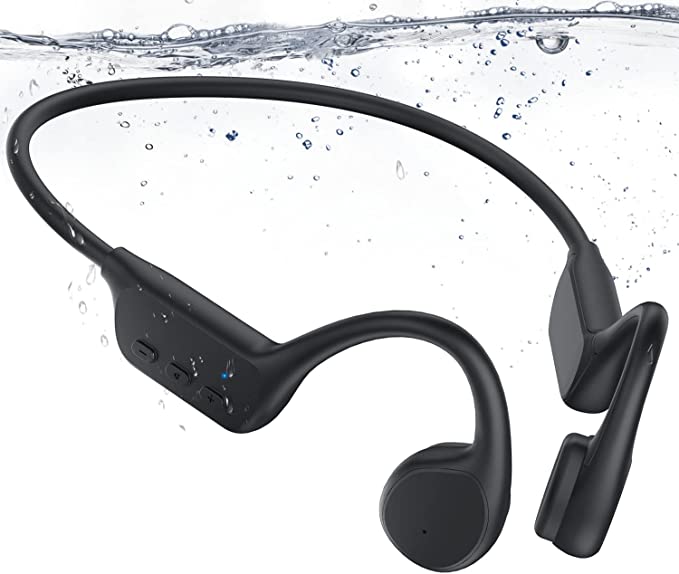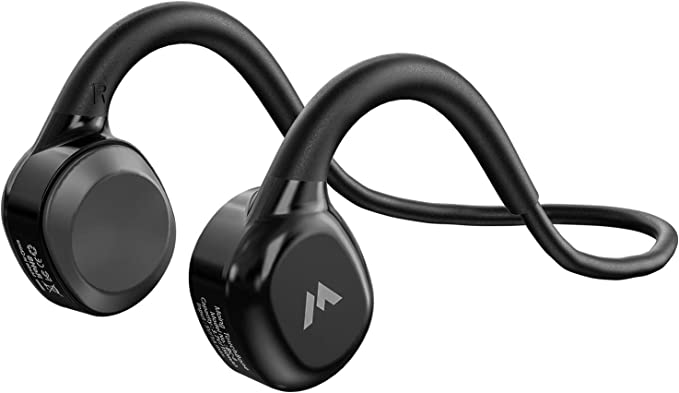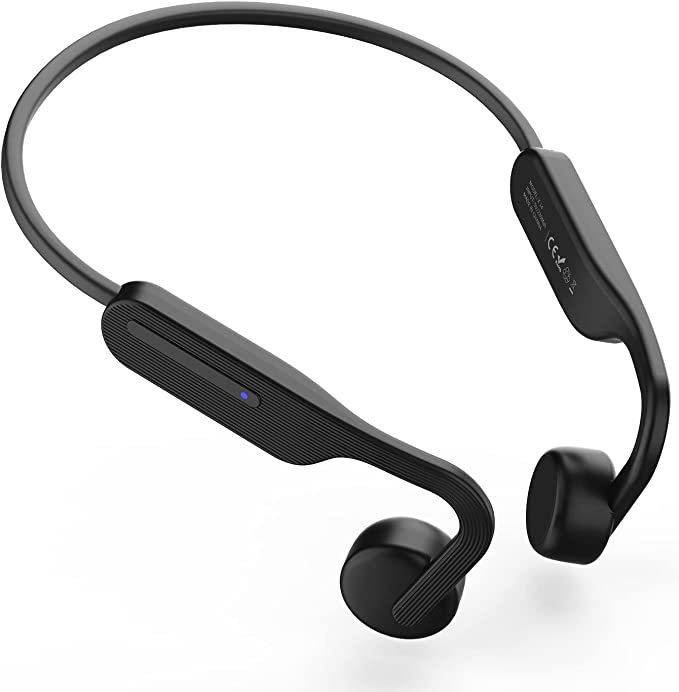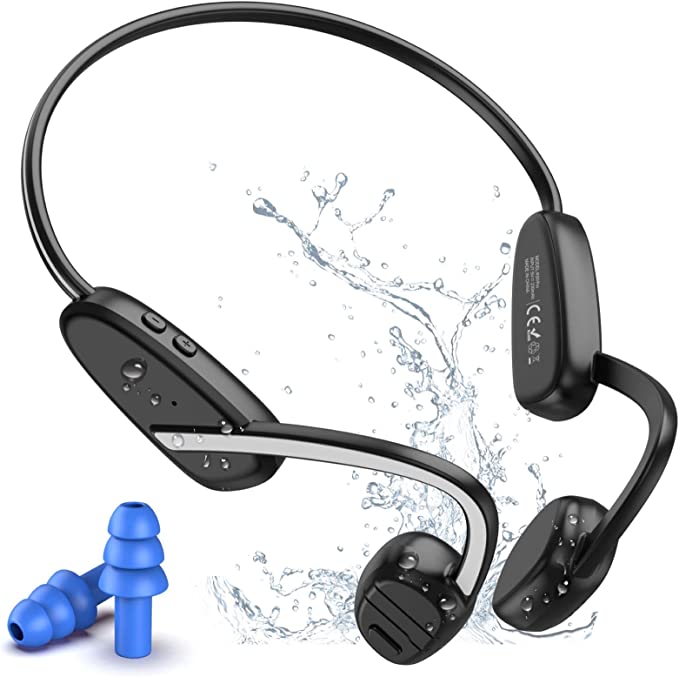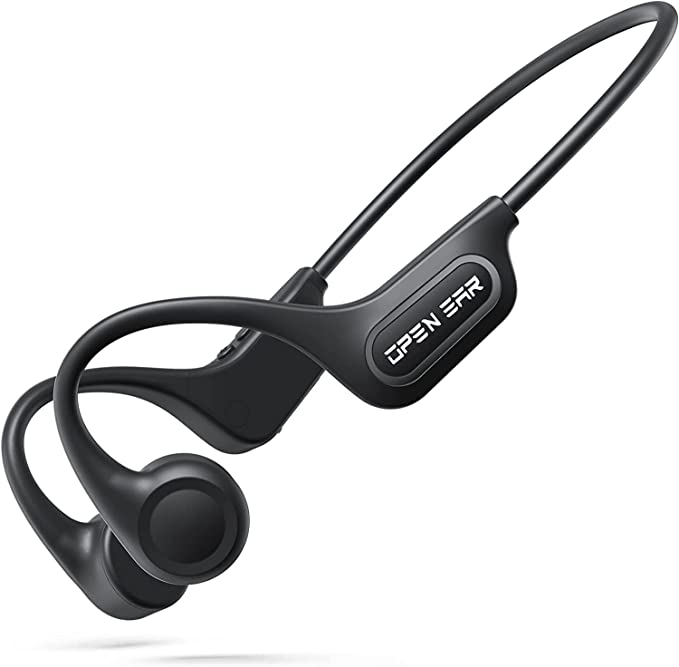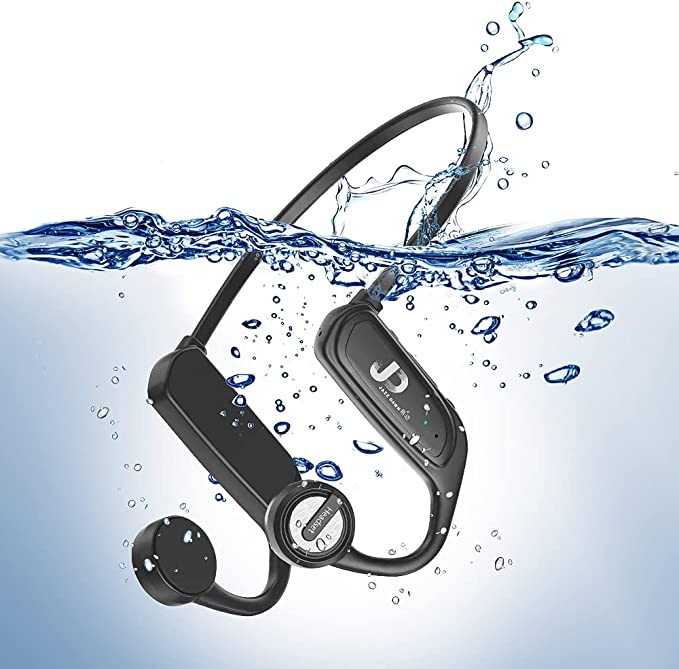TEDATATA AIR52 Bone Conduction Headphones: A Mini Open Earbud Providing an Immersive Music Experience
Update on June 20, 2025, 6:11 p.m.
Ever paused to consider the symphony that constantly surrounds us? From the gentle rustle of leaves to the bustling city chorus, and the curated soundtracks we choose to accompany our days, sound shapes our perception of the world. But what if there was a way to tune into your personal audio without entirely tuning out that rich, ambient tapestry? Imagine hearing your favorite podcast while still catching the chime of a bicycle bell, or a colleague’s approaching footsteps. This isn’t a futuristic fantasy; it’s the intriguing reality offered by bone conduction technology, a path to hearing that a device like the TEDATATA AIR52 Bone Conduction Headphones aims to navigate.

A Whisper from History: The Origins of Hearing Through Bone
The idea of sound traveling through our bones isn’t new; in fact, it has a rather resonant history. Picture this: the great composer Ludwig van Beethoven, as his conventional hearing tragically faded, found a way to “hear” the music he was composing. He would reportedly clench a wooden rod between his teeth, with the other end touching his piano. The vibrations from the instrument would travel through the rod, into his jawbone, and directly to his inner ear, allowing him to perceive the notes. This was a rudimentary, yet profound, demonstration of bone conduction.
Long before it found its way into consumer electronics, this principle was leveraged in more specialized fields. Early forms of hearing aids utilized bone conduction for individuals whose outer or middle ear pathways were compromised. Military tank crews, enveloped in deafening mechanical noise, relied on bone conduction headsets to receive vital commands, as vibrations could cut through the din more effectively than sound waves traveling through already overwhelmed ears. These historical footnotes underscore a fundamental truth: our bones can indeed be conduits for sound.

The Science Unveiled: How Bone Conduction Bypasses the Beaten Path
To truly appreciate bone conduction, let’s first quickly revisit how we typically hear. Sound waves, which are essentially vibrations traveling through the air, are funneled by our outer ear into the ear canal. They strike the eardrum, causing it to vibrate. Think of the eardrum as the head of a tiny, exquisitely sensitive drum. These vibrations are then amplified and transmitted by a delicate chain of three tiny bones in the middle ear – the ossicles – acting like an intricate lever system. Finally, these amplified vibrations reach the cochlea, a spiral-shaped, fluid-filled organ in the inner ear. It’s here, within this “snail shell,” that specialized hair cells convert the mechanical vibrations into electrical signals, which the auditory nerve then zaps to the brain to be interpreted as sound. This is air conduction.
Now, bone conduction offers a fascinating detour. Instead of sound waves entering the ear canal, devices employing this technology, like the TEDATATA AIR52, feature small transducers that rest typically on the cheekbones, just in front of the ears. These transducers don’t blast sound into your ears; they generate subtle mechanical vibrations. These vibrations travel directly through the bones of your skull – your very own skeletal structure acting as a sound bridge – to reach the cochlea in the inner ear. It’s like gently tapping directly on the casing of our metaphorical “piano” (the cochlea) to make its strings (the hair cells) resonate, rather than meticulously playing its keys (the eardrum and ossicles). The critical distinction is that bone conduction largely bypasses the eardrum and the middle ear structures.

The Allure of Openness: Why Choose Bone Conduction?
This unique auditory pathway unlocks several compelling advantages. The most celebrated is situational awareness. Because your ear canals remain completely open, you can enjoy your music, podcasts, or calls while staying fully attuned to the sounds of your environment. For a cyclist navigating city streets, a runner on a busy trail, or a driver needing to hear sirens or other vehicles, this unblocked auditory connection to the surroundings is not just a convenience—it can be a crucial safety feature. Even in an office, it means you can listen to focus-enhancing music without missing a colleague calling your name.
Beyond safety, there’s a potential for enhanced comfort for some individuals. Many people find traditional in-ear buds intrusive or uncomfortable for long periods, leading to ear fatigue or even irritation. Over-ear headphones, while often comfortable, can be bulky and warm. Bone conduction headphones, resting outside the ear, can offer a welcome alternative.
Furthermore, while consumer bone conduction headphones are not medical devices unless specifically certified as such, the underlying principle has historically benefited individuals with certain types of conductive hearing loss – that is, problems with the outer or middle ear that prevent sound from effectively reaching the cochlea. By bypassing these areas, bone conduction can sometimes offer a clearer path for sound.
Navigating the Nuances: The Inherent Challenges of Listening Through Bone
However, like any technology, bone conduction isn’t without its trade-offs and nuances. The very openness that provides situational awareness can also influence the listening experience in other ways.
One of the most frequently discussed aspects is sound quality. * Bass reproduction via bone conduction often feels different, sometimes less impactful or “thumpy,” compared to what you’d experience with in-ear headphones that create a seal. This is partly because lower frequencies often benefit from the resonance and pressure changes within a closed ear canal, and transmitting powerful low-frequency vibrations effectively through bone without causing discomfort is an engineering challenge. * While clarity for voice and mid-range frequencies can be excellent, some audiophiles might find the overall fidelity and richness subtly different from high-end air conduction headphones. * Then there’s sound leakage, sometimes referred to as “sound spill.” Because the transducers are vibrating against your skin and bone, some of that vibrational energy can radiate sound into the surrounding air. This means that if you’re listening at higher volumes in a quiet environment, people nearby might be able to hear a faint version of your audio. This is a natural consequence of an open design where sound isn’t contained within the ear canal.
The fit and feel factor is also paramount and highly individual. * Effective bone conduction relies on good contact between the transducers and the bone. Headphones must exert enough pressure to maintain this contact and efficiently transfer vibrations, but not so much that they cause discomfort, headaches, or pressure sores over extended wear. This is a delicate ergonomic balancing act. * Human head shapes and sizes vary considerably. What feels perfectly secure and comfortable for one person might feel loose or painfully tight for another. This makes a “one-size-fits-all” design particularly challenging for bone conduction headphones.
Spotlight on the TEDATATA AIR52: A Case Study in a Crowded Field
The TEDATATA AIR52 Bone Conduction Headphones enter this arena as one of many contenders aiming to deliver on the promise of open-ear audio. According to the provided product information, they are “Mini Open Earbuds” constructed from plastic, featuring Bluetooth for wireless connectivity and “Smart Touch” controls.
A particularly intriguing claim is “Dual Noise Cancellation.” In the context of open-ear headphones, this warrants a closer look. * Traditional Active Noise Cancellation (ANC), which works by creating “anti-noise” to cancel out ambient sounds, is most effective in closed-back or in-ear headphones that create a seal around or in the ear. This seal is crucial for ANC to effectively reduce the noise you hear. For open-ear designs like bone conduction headphones, achieving significant ANC for the listener is incredibly difficult because ambient sound naturally reaches the ear canal. * So, what might “Dual Noise Cancellation” mean for the AIR52? A more plausible interpretation, common in many types of headphones and earbuds today, is that it refers to noise reduction for the microphones used during calls. Technologies like Environmental Noise Cancellation (ENC) or Clear Voice Capture (cVc) use multiple microphones and sophisticated algorithms to distinguish the user’s voice from background noise, making your voice sound clearer to the person you’re talking to. This is a valuable feature for call quality but is distinct from reducing the ambient noise you perceive while listening to music. * Without explicit technical details from TEDATATA, the precise nature of this “Dual Noise Cancellation” remains somewhat of an enigma. Clearer communication from manufacturers on such features is always beneficial for consumers.
Echoes from Users: The TEDATATA AIR52 Experience (Based on Provided Data)
Real-world user experiences offer invaluable insights into how a product performs beyond its spec sheet. For the TEDATATA AIR52, the available data shows a customer rating of 2.4 out of 5 stars from 3 global ratings. This indicates a very mixed, and predominantly negative, initial reception.
Let’s break down the feedback:
* A user named “Bear” rated them 4.0 out of 5 stars, stating they are “Easy to use.” This suggests a straightforward setup process or intuitive controls, which is certainly a plus.
* However, “Elizabeth Vaughn,” who gave a 2.0-star rating, highlighted significant issues: “uncomfortable” and “very hard to put on your ears.” This directly points to the ergonomic challenges discussed earlier – a poor fit can negate any other benefits. Elizabeth Vaughn also noted, “While the sound on these is ‘okay’ they are very hard to put on your ears and are not comfortable to wear at all. The sound isn’t very loud as it seems most of the sound comes from the part that is outside your ear.“
* The comment about the sound not being “very loud” could be due to several factors: an inefficient fit preventing optimal vibration transfer, the inherent nature of bone conduction sometimes being perceived as less intense than direct in-ear sound, or potentially a limitation of the device’s output.
* The observation that “most of the sound comes from the part that is outside your ear” is a classic description of significant sound leakage, which can occur with a poor fit or less-than-optimal transducer design, reducing the audio intensity for the user and making it audible to others.
* The most succinct, and damning, feedback came from “Mitchell,” who rated them 1.0 out of 5 stars with a simple “Hate them.” This expresses profound dissatisfaction.
The product’s status as “Currently unavailable” on the platform also invites contemplation. This could be due to temporary stock issues, a product line refresh, or perhaps a decision influenced by early market reception and performance.
Beyond a Single Device: Wisdom for Choosing Your Sound
The experiences with the TEDATATA AIR52, though limited, echo broader considerations when venturing into the world of bone conduction audio. If this technology piques your interest, here’s some wisdom to carry:
- Try Before You Buy (If Possible): Given the importance of fit and the subjective nature of sound perception with bone conduction, trying a pair on is invaluable. Pay attention to comfort over at least 15-30 minutes, and assess the sound quality in an environment similar to where you’d typically use them.
- Scrutinize Specifications (When Available): Look for an IP rating (e.g., IPX5 or higher) if you plan to use them for sports, as this indicates resistance to sweat and moisture. Check for stated battery life to ensure it meets your needs. While often not detailed by all brands, information on Bluetooth version and supported codecs (like AAC or aptX) can hint at connection stability and potential audio quality.
- Read a Spectrum of Reviews: Don’t rely on a single opinion. Seek out reviews from various sources, looking for patterns in comments about comfort, sound quality, durability, and battery life. Understand that personal preferences and head shapes mean experiences will vary.
- Manage Expectations: Appreciate bone conduction for its unique strengths – primarily situational awareness and an open-ear experience. Understand that there might be trade-offs in areas like deep bass response or absolute sound isolation compared to other headphone types.
The Future Sounds Different: Bone Conduction’s Path Forward
Bone conduction technology is far from static. The field continues to evolve. We can anticipate ongoing improvements in transducer efficiency, leading to better sound quality with less power consumption. Materials science plays a crucial role in developing frames and contact points that are both comfortable for extended wear and excellent at transmitting vibrations. More sophisticated digital signal processing (DSP) can help to shape the sound profile, compensating for some of the inherent acoustic challenges and potentially improving perceived bass and clarity.
We might also see deeper integration with other wearable technologies, perhaps providing subtle audio cues for navigation or notifications within augmented reality systems, all while keeping the ears open to the real world.
Concluding Thoughts: Hearing the World, Your Way
Bone conduction headphones, exemplified by devices like the (currently unavailable) TEDATATA AIR52, represent a truly fascinating intersection of physiology and audio engineering. They offer a tangible alternative for those who prioritize hearing their surroundings or find traditional headphones unsuitable. The science is sound, and the benefits for specific use cases are clear.
However, as the limited feedback for the AIR52 suggests, the journey from a promising technological principle to a universally acclaimed consumer product is fraught with challenges in design, ergonomics, and acoustic execution. The key for any listener is to approach this and any emerging audio technology with an informed perspective – understanding its capabilities, acknowledging its limitations, and aligning those with your personal needs and listening habits. The world of sound is vast and ever-changing; choosing how you engage with it is a beautifully personal journey.
